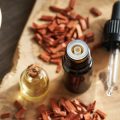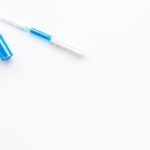Introduction: Why Skin Healing Matters
Understanding how your skin heals after treatments like facials, microneedling, or chemical peels is more important than you might think. Skin isn’t just a protective barrier—it’s a living organ that responds to every product and procedure you apply. Whether you’re aiming for a radiant glow, smoother texture, or diminished scars, the real magic happens during the healing process. When you invest in professional skin treatments, your body goes into recovery mode, activating natural repair mechanisms that help renew and strengthen your skin. By knowing what’s happening beneath the surface, you’ll be better equipped to care for your skin post-treatment and maximize the benefits of every visit to your esthetician or dermatologist.
2. The Basics of Skin Anatomy
To truly understand how your skin heals after a treatment, it helps to know what’s going on beneath the surface. Your skin isn’t just a simple covering—it’s a complex organ made up of several distinct layers, each with its own critical role in the healing process. Here’s a quick breakdown:
| Skin Layer | Main Function | Role in Healing |
|---|---|---|
| Epidermis | Protects against environmental threats; produces new skin cells | Initial barrier repair and regeneration after injury or treatment |
| Dermis | Houses collagen, elastin, blood vessels, and nerves; supports flexibility and strength | Facilitates wound closure, collagen remodeling, and immune response |
| Subcutaneous Tissue (Hypodermis) | Stores fat; insulates and cushions deeper tissues | Provides structural support and resources for cell repair |
The epidermis, your outermost layer, acts as your first line of defense—think of it as nature’s bandage. Right below that is the dermis, where you’ll find the building blocks for elasticity and strength. And finally, the subcutaneous tissue provides insulation and energy reserves, making sure your body has what it needs to recover.
This layered structure sets the stage for your body’s healing response whenever you have a cosmetic procedure or even a minor scrape. Each layer jumps into action in its own way to restore balance and protect you—laying the groundwork for optimal recovery.
![]()
3. Immediate Aftermath: The Body’s Emergency Response
Within the first few hours after a skin treatment—whether it’s a facial, microneedling, laser therapy, or even a chemical peel—your body launches its emergency response system. This is totally natural and a sign that your skin’s healing mechanisms are kicking into gear. Redness and swelling are the most common immediate reactions. These symptoms aren’t just random side effects; they’re actually your body’s way of protecting and repairing itself. When the skin barrier is disrupted, blood vessels in the area widen to increase blood flow. This brings more oxygen and nutrients to the site while also carrying away waste products from damaged cells. At the same time, immune cells rush to the scene to fend off potential bacteria and start cleaning up any debris. If you notice warmth, tingling, or even mild discomfort, don’t worry—these are classic signals that your body’s repair squad is on duty. The redness typically fades within several hours to a day, depending on your skin type and the intensity of the treatment. Remember, this quick initial reaction sets the foundation for deeper healing in the days to come.
4. Regeneration Mode: Repair and Rebuild
After your skin undergoes a treatment—whether it’s a facial, microneedling, or a laser session—your body immediately kicks into regeneration mode. This is the phase where the real magic happens beneath the surface, as your body works overtime to repair and rebuild the treated area. But what exactly goes on during this healing process? Let’s break it down:
How Your Body Responds to Skin Treatments
Your body’s first priority after any skin treatment is to start repairing microscopic injuries caused by procedures. This is not only normal but actually necessary for effective results. During this phase, the body launches a complex series of events designed to restore your skin’s integrity and appearance.
Collagen Production: The Building Block of New Skin
The most critical part of regeneration is collagen production. Collagen is like the scaffolding of your skin—it keeps everything firm, plump, and youthful-looking. When your skin senses that it’s been injured (even at a microscopic level), it signals special cells called fibroblasts to ramp up collagen synthesis.
| Process | Function in Healing | Timeframe |
|---|---|---|
| Collagen Synthesis | Restores strength and elasticity | Begins within 48 hours, peaks at 1-2 weeks |
| New Cell Formation | Replaces damaged or dead cells with fresh ones | Ongoing for several days to weeks |
| Tissue Remodeling | Smooths texture, reduces discoloration | Can last for months post-treatment |
The Creation of New Skin Cells
As part of the regeneration process, your body also stimulates the production of new skin cells in the basal layer of your epidermis. These young cells gradually move upward, eventually replacing older or damaged cells on the surface. This natural turnover helps fade imperfections and gives you that coveted post-treatment glow.
Why This Matters for Lasting Results
This repair-and-rebuild cycle is what makes professional treatments so effective over time. By understanding how your body naturally heals itself—through increased collagen, new cell growth, and tissue remodeling—you can appreciate why consistency and proper aftercare are essential for achieving lasting improvements in your skin’s appearance.
5. Factors That Affect Healing
When it comes to how your skin recovers after a treatment, there’s no one-size-fits-all answer. Several factors play a key role in determining both the speed and quality of your healing process. Understanding these can help you set realistic expectations and make choices that support your skin’s recovery.
Age Matters
As we get older, our skin naturally becomes thinner and loses some of its ability to repair itself quickly. Younger people tend to heal faster because their bodies produce collagen at higher rates, which is essential for skin regeneration. If you’re over 40, you might notice it takes a bit longer for redness or swelling to subside after treatments compared to when you were younger.
Lifestyle Habits
Your daily habits—like whether you smoke, how much alcohol you drink, and how much sleep you get—can dramatically impact healing. Smoking restricts blood flow and oxygen supply to your skin, slowing down the repair process. Lack of sleep or chronic stress also hampers your body’s ability to recover, so prioritizing rest and relaxation is more important than you might think.
The Importance of Aftercare
Following your provider’s aftercare instructions is crucial. Using recommended ointments, avoiding sun exposure, and keeping the treated area clean are all essential steps that can either speed up or slow down healing. Skipping proper aftercare can lead to complications or prolong redness, swelling, and discomfort.
Diet: You Are What You Eat
Nutrient-rich foods can give your body the building blocks it needs for recovery. Protein helps rebuild tissue, while vitamins C and E act as antioxidants that protect skin cells from damage. Staying hydrated by drinking plenty of water keeps your skin plump and supports its natural healing functions. On the flip side, diets high in sugar or processed foods may contribute to inflammation and slower healing times.
Bottom Line
The way your skin heals after a treatment depends on a combination of age, lifestyle habits, proper aftercare, and what you put on your plate. By taking care of these factors, you can support your body’s natural repair systems and set yourself up for the best possible results.
6. Do’s and Don’ts During Recovery
When your skin is healing after a treatment, knowing what to do—and what not to do—can make a huge difference in your results. Here’s practical, American-style advice to help you navigate the recovery process with confidence.
Do: Stick to Gentle Skincare Routines
Keep it simple! Use mild, fragrance-free cleansers and moisturizers recommended by your dermatologist or esthetician. Avoid scrubbing, exfoliating, or using strong actives like retinol or acids until your skin fully recovers. Hydration is key—think soothing serums with ingredients like hyaluronic acid or ceramides.
Don’t: Skip Sun Protection
The American Dermatology Association emphasizes that sun protection is non-negotiable during recovery. Always use a broad-spectrum SPF 30 or higher, even if you’re mostly indoors. Wear hats, sunglasses, and seek shade when outside. Remember, fresh skin is extra vulnerable to UV rays, which can cause hyperpigmentation and slow healing.
Do: Listen to Professional Advice
Your provider knows best. Follow their post-treatment instructions closely—even if they seem basic. This might mean skipping makeup for a few days or avoiding saunas and hot yoga. If something feels off, don’t hesitate to call their office for reassurance or guidance.
Don’t: Pick, Scratch, or Touch
No matter how tempting it is, never pick at scabs or peeling skin—it can lead to scars or infection. Wash hands before touching your face and use clean pillowcases and towels to minimize bacteria exposure.
Additional Tips for Smooth Healing
Stay hydrated by drinking plenty of water, get enough sleep, and avoid smoking or alcohol while your body repairs itself. A healthy lifestyle supports faster and better healing outcomes.
7. Long-Term Skin Health: Supporting Your Healing Journey
After any skin treatment, your body’s healing process lays the foundation for healthier, more radiant skin. But to truly maximize and maintain those results, long-term care is essential. The science of skin healing doesn’t end when you leave the treatment room—your daily habits and lifestyle choices play a huge role in supporting ongoing recovery and resilience.
Prioritize Consistent Skincare Routines
A gentle yet effective skincare routine is key. Stick with mild cleansers, hydrating serums, and moisturizers that reinforce your skin’s barrier. Avoid harsh exfoliants or active ingredients (like retinoids or strong acids) unless cleared by your provider, especially in the weeks following a procedure.
Embrace Sun Protection
UV exposure can undo all the progress your skin has made and even increase the risk of complications after treatments. Make sunscreen with at least SPF 30 a non-negotiable part of your morning routine—even on cloudy days or when indoors near windows. Wide-brimmed hats and sunglasses provide extra defense against sun damage.
Hydrate Inside and Out
Your body needs plenty of water to fuel cellular repair and maintain supple, healthy skin. Drink water regularly throughout the day and use topical products containing hyaluronic acid or glycerin to lock in moisture on the surface.
Nourish With a Balanced Diet
What you eat can directly impact how well your skin heals and thrives long-term. Focus on antioxidant-rich fruits and vegetables, lean proteins, and healthy fats like omega-3s from fish or flaxseed. Limit processed foods and sugar, which can contribute to inflammation.
Schedule Regular Check-Ins With Your Provider
Your dermatologist or skincare professional isn’t just there for one-time treatments—they’re your partner in maintaining results. Book follow-up appointments as recommended to monitor progress, discuss concerns, and adjust your regimen if needed.
Listen to Your Skin
Your skin will tell you what it needs. If you notice increased sensitivity, dryness, or irritation, scale back active ingredients and talk to your provider about alternative options. Over time, consistency with gentle care pays off.
By adopting these habits, you support your body’s natural science-driven healing abilities—and set yourself up for glowing, resilient skin long after your treatment ends.


